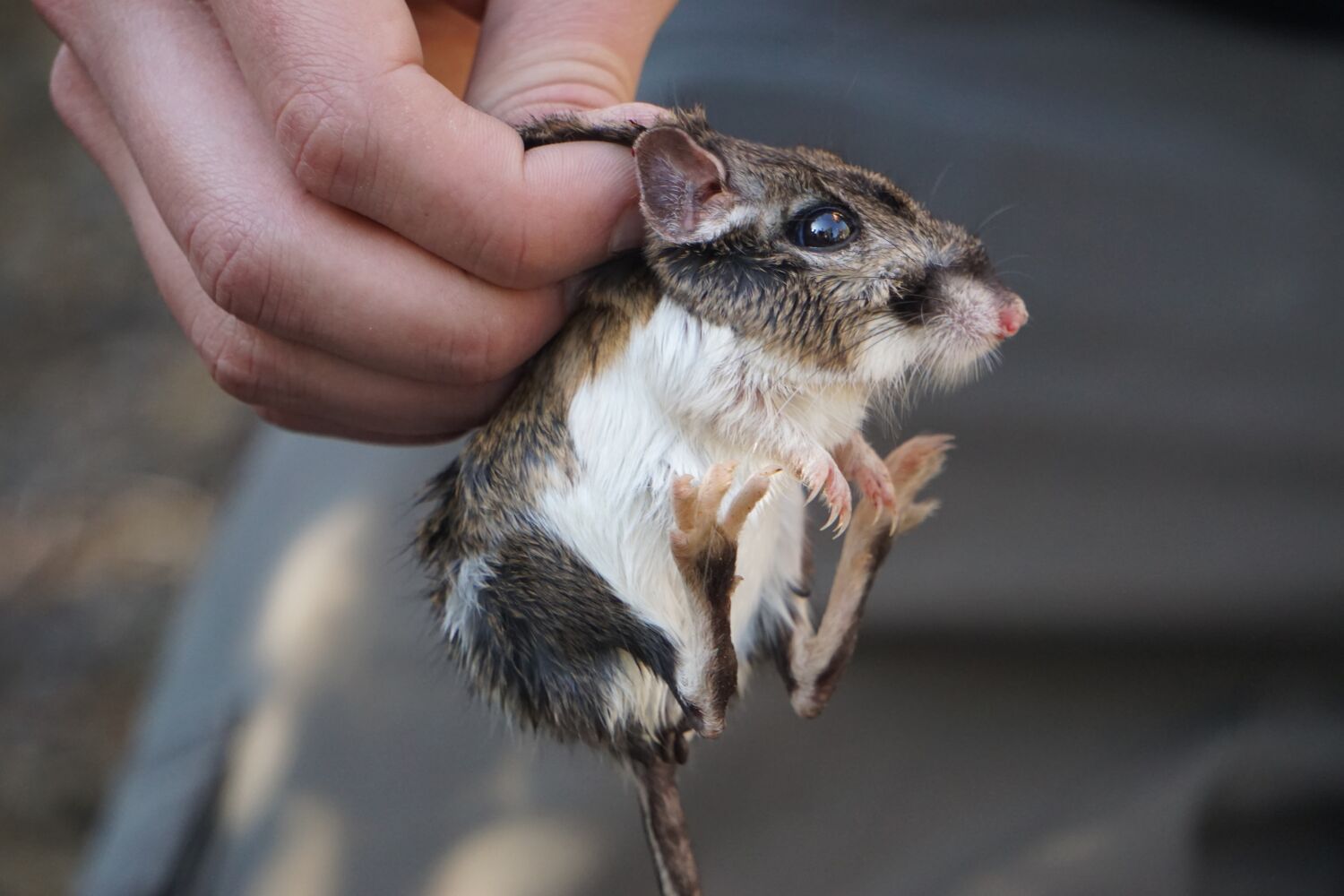Global Courant
In 2019, cameras set up by wildlife photographer and researcher Ken Hickman at the Sierra Azul Open Space Preserve, a 19,000-acre stretch of wilderness in the Santa Cruz Mountains, captured images of a small creature with prominent black eyes, large back legs, and a long tail – a Santa Cruz kangaroo rat.
For an animal so small, the response to the photos from the scientific community was enormous, with researchers marveling at the discovery and launching new initiatives to map its habitat.
Matthew Sharp Chaney – a biologist with the Midpeninsula Regional Open Space District of Midpen – called the discovery exciting, saying it offers an opportunity to research a creature long thought to have vanished from the region.
“If we hadn’t preserved this huge area in Sierra Azul,” he said, “this area might have been developed; we might have lost the species.”
The Santa Cruz kangaroo rat, which is more closely related to squirrels and gophers than kangaroos or rats, had not been seen in the area since the 1940s. The creature is listed as a critically endangered subspecies by the California Department of Fish and Wildlife and was believed to exist only in Henry Cowell Redwoods State Park in Felton.
Midpen and researchers from UC Santa Cruz, UC Davis and Cal Poly San Luis Obispo confirmed the presence of the kangaroo rat earlier this year, humanely entrapping and releasing nearly a dozen of the animals — which hopped around like kangaroos.
So why are scientists so excited to see the Santa Cruz kangaroo rat make its home to this California preserve nearly a century later?
The creature – like larger and more recognizable animals like mountain lions and otters – is a “keystone species”, meaning it has an outsized impact on its environment.
The animals cache seeds in their underground burrows. Those seeds that are not eaten will propagate into new bushes and shrubs such as Manzanita, adding to the health of the chaparral and the open space reserve.
The buried seeds are also protected when a fire passes through the area, allowing them to take root in the charred, but now nutrient-rich soil.
“Where we have k-rats, we have a healthier chaparral habitat,” Sharp Chaney said in an interview. “And that benefits not only the k-rats themselves, but a number of other animal species that also depend on those plants and plant communities for food sources and shelter.”
But the future remains dangerous. The open space where the species lives is shrinking.
One of the reasons for this is the success of the firefighting efforts.
“For a long time, the state’s official sense was that all the fire was kind of bad,” said Ryan McCauley, a public affairs specialist at Midpen. “But I think that understanding is evolving.”
Wildfires can play an important role in balancing an ecosystem, thinning out clumps of larger trees and allowing smaller plants to thrive, creating a diversity of habitats.
“What we like to see, at the landscape level,” Sharp Chaney said, “is a variety of habitats that support many different species and many different ecosystems.”
But as fires are quickly extinguished, knotty pine forests have encroached on the Sierra Azul Reserve. Researchers also recently discovered a dusky-footed wood rat from San Francisco in the area. As the name suggests, that animal is more commonly found in forested habitats.
That “tells us that the habitat is changing over time and becoming more of a forest and less of an open chaparral community,” Sharp Chaney said, adding that “open Manzanita-dominated habitat … really disappearing pretty quickly it.”
The rediscovery of the kangaroo rat in the reserve is a reminder of the need for land conservation, he said. Ongoing research on the kangaroo rat, including population documentation and genetic testing, will help develop habitat conservation strategies to promote the health of the species.








